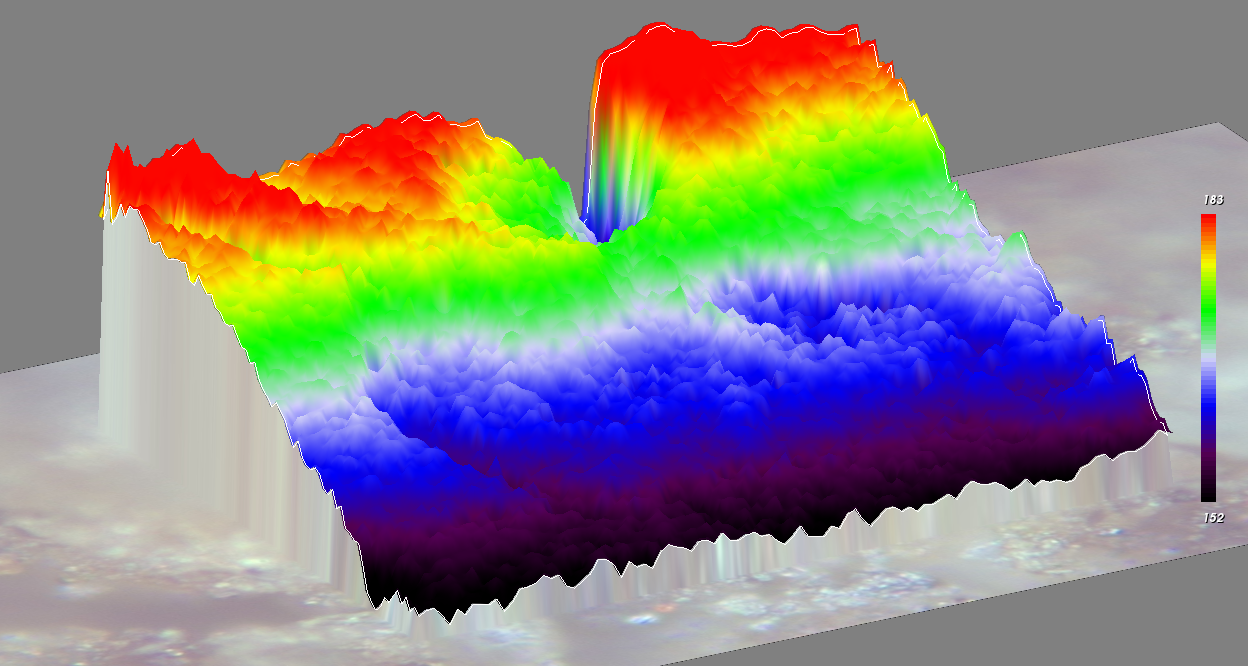Investigating the secrets of Stonehenge with Raman spectroscopy
Provenance of the ancient Altar Stone
Located in Salisbury, UK, Stonehenge is the most architecturally sophisticated prehistoric stone circle in the world. In the quest to unravel the mysteries of Stonehenge, Renishaw had the privilege to assist in analysing the Altar Stone in situ using a Renishaw Virsa™ Raman analyser. The Altar Stone is unusual and differs in appearance when compared to the other main bluestones of Stonehenge. The aim was to use Raman spectroscopy and minerology to understand the provenance of the stone. Raman spectroscopy is ideal for this analysis as it is sensitive to the chemical and mineralogical composition of geological samples. To ensure the site was free from tourists, Renishaw was on site from dusk till dawn with a team of experts in geology, headed by Prof. Richard Bevins.
Prof. Bevins is an Honorary Professor at Aberystwyth University and a former Honorary Research Fellow at the National Museum of Wales. He has been dedicating significant effort in determining the provenance of some of the bluestones at Stonehenge. Prof. Bevins and his team previously confirmed that these rocks are linked to Pembrokeshire, Wales[1].
The team includes Prof. Sergio Andò and Dr Marta Barbarano, both Raman spectroscopy experts in geology from the University of Milano Bicocca, Italy. Prof. Andò is a researcher in Heavy Minerals and Sedimentology applied to provenance studies. He has previously analysed a small fragment of the Altar Stone using Raman spectroscopy at Renishaw's applications laboratory in Gloucestershire, UK.

Some of the team that analysed the Altar Stone at Stonehenge overnight. From left to right; Prof Sergio Andò, Dr Jorge Diniz (Renishaw plc) and Dr Marta Barbarano.
The Altar Stone is a grey-green micaceous sandstone, otherwise known as Stone 80. It is anomalous in its composition, size and weight when compared to the other bluestones. A very recent publication by a team of geologists, which included Prof. Bevins and Prof. Andò, proposes that the Altar Stone be declassified as a bluestone. Based on X-ray and Raman analysis in the laboratory on fragments of the stone using a Renishaw inVia Raman microscope, they hypothesise that the stone did not originate from the Anglo-Welsh Basin, as previously thought[2]. Other possibilities for where the AS comes from include rocks of the same age or younger in northern England or Scotland and Raman will help elucidate the source.
With small samples, this work is easily done in a lab using a Raman microscope. However, this is almost impossible in remote locations and with gigantic samples, such as the Altar Stone which is partly buried and an estimated six tonnes in weight.
The transportable Virsa™ Raman analyser
This application is ideal for the transportable Virsa analyser. The Virsa positioning system allows quick movement of the point of analysis with micrometre precision. This brings automated Raman imaging with microscopic resolution to large samples in situ, which is not achievable with handheld instruments. Due to the immense flexibility of the stage, the probes were positioned to precisely focus on the Altar Stone to enable Raman analysis, without any damage.
The Virsa analyser was equipped with LiveTrack™ focus-tracking technology which meant the uneven surface of the Altar Stone posed no challenge. This enabled automated Raman imaging with the probe at constant optimum focus across the surface.
The low power requirements of the Virsa analyser meant that it could be powered by a portable battery pack for over 11 hours. Its use onsite at Stonehenge demonstrated that the system is a truly portable high performance Raman system.

A versatile portable Raman laboratory. The Virsa Raman analyser at Stonehenge powered by a portable battery pack (left). The flexible Virsa SB200 stage carefully positioned close to the Altar Stone (right). The inset shows the Virsa probe focusing on a region of the Altar Stone.
The Altar Stone's chemical secrets to be revealed
The team acquired Raman spectra from different areas of Altar Stone. The aim was to obtain a good mineralogic fingerprint and chemical image to support the characterisation of the specimen. The data will be carefully analysed in Italy by Prof Andò. Ultimately, this could confirm the provenance of this unique stone and along with comparison to other mineral samples, the geographical source.
This is a great example of how the Virsa analyser allows users to take the lab to the sample, when it is not possible to take the sample to the lab.

The topography map of a ca. 115 x 90 μm2 area of the Altar Stone, showing a variation of approximately 31 μm2 in height (black to red). Although no chemical information can be presented now, the topographic information is displayed obtained using LiveTrack technology during the Raman analysis.
Below is a video interview with includes Prof. Sergio Andò describing the reasons for the visit and analysis of the ancient stone.
[1] R.E. Bevins, N.J.G. Pearce, R.A. Ixer, Journal of Archaeological Science, 38, 2011, 605.
[2] R.E. Bevins, R.A. Ixer, N.J.G. Pearce, D. Pirrie, S. Andò, S. Hillier, P. Turner, M. Power, Journal of Archaeological Science: Reports, 51, 2023, 104215.